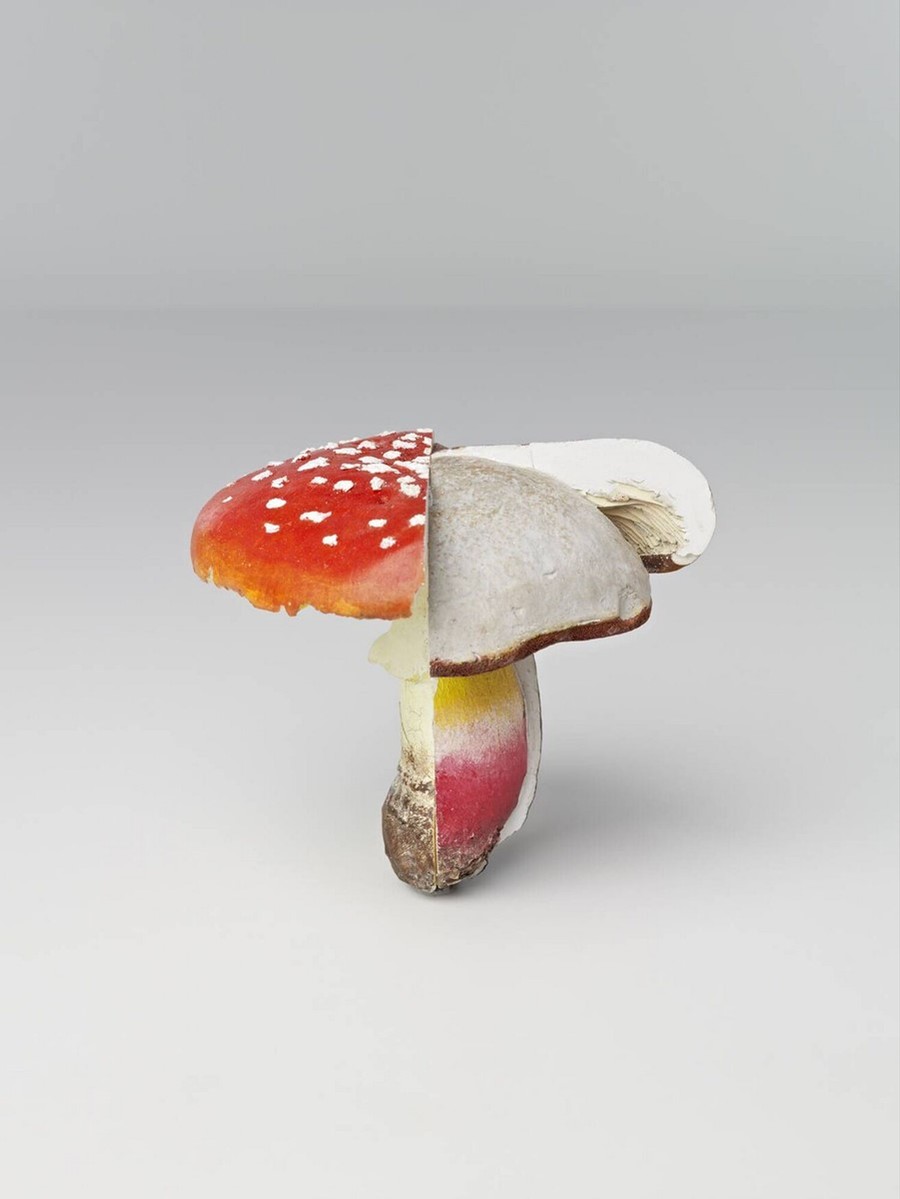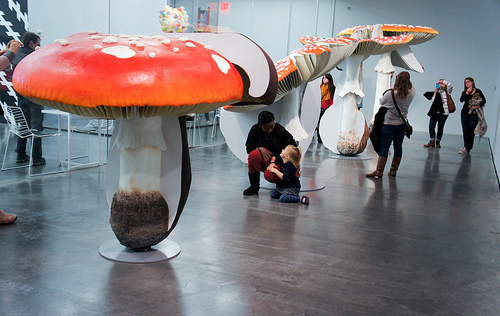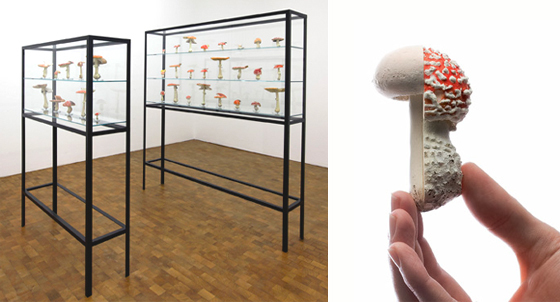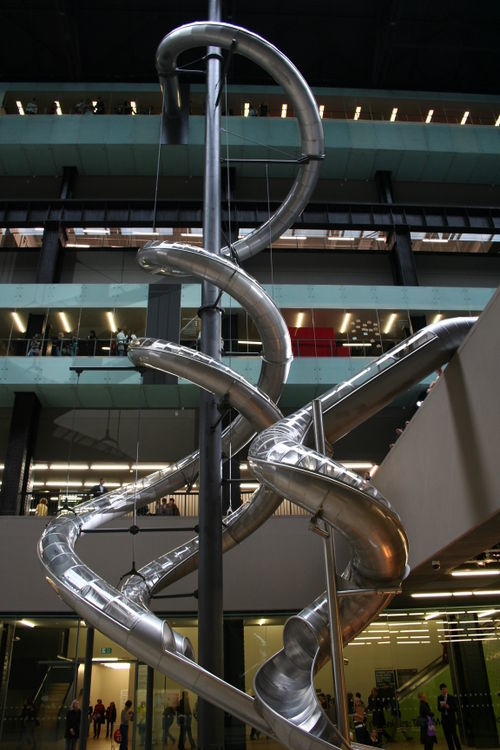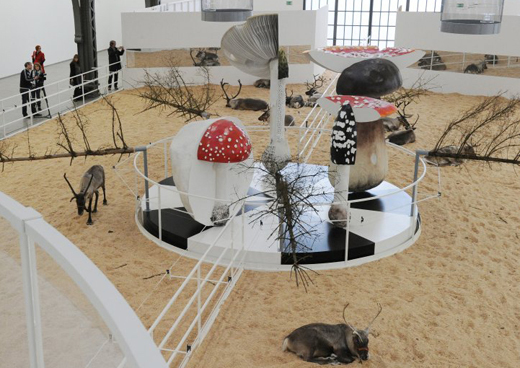Difference between revisions of "User:Fatma Kizil"
Fatma Kizil (talk | contribs) |
Fatma Kizil (talk | contribs) |
||
| Line 3: | Line 3: | ||
I missed the first week of the minor, so I was a bit late with finding my object for this project. After visiting the boijmans and searching on the collection online. I chose a work of Carsten Höller that is in the archive. I was really inspired bij the the colors and the shapes. And I am always interested in the nature. | I missed the first week of the minor, so I was a bit late with finding my object for this project. After visiting the boijmans and searching on the collection online. I chose a work of Carsten Höller that is in the archive. I was really inspired bij the the colors and the shapes. And I am always interested in the nature. | ||
| − | [[File:bek-1844-(mk)_large.jpg | + | [[File:bek-1844-(mk)_large.jpg]] |
Titel - Fliegenpilz/Satanspilz/Habichtspilz, Kunstenaar - Carsten Höller, Brussel 1961, Uitvoerder - Lars MandlerJaartal2009, Lokatie - Dit object is in het depot, Afmetingen - 9 x 10,5 x 10 cm, Materiaal en techniek - polyurethaan hars en acrylverf | Titel - Fliegenpilz/Satanspilz/Habichtspilz, Kunstenaar - Carsten Höller, Brussel 1961, Uitvoerder - Lars MandlerJaartal2009, Lokatie - Dit object is in het depot, Afmetingen - 9 x 10,5 x 10 cm, Materiaal en techniek - polyurethaan hars en acrylverf | ||
| Line 25: | Line 25: | ||
Test Site, as the title declares, is an experimental project. Using the given characteristics of Tate Modern’s Turbine Hall, German artist Carsten Höller has taken advantage of the height of the space, and the vast museum audience, to test a hypothesis he has been investigating for some time concerning the possible effects of sliding. What would be the result of sliding if it was part of the daily routine? Can slides become part of our experiential and architectural life? | Test Site, as the title declares, is an experimental project. Using the given characteristics of Tate Modern’s Turbine Hall, German artist Carsten Höller has taken advantage of the height of the space, and the vast museum audience, to test a hypothesis he has been investigating for some time concerning the possible effects of sliding. What would be the result of sliding if it was part of the daily routine? Can slides become part of our experiential and architectural life? | ||
| − | [[File:Test_Site_by_Carsten_Höller.jpg| | + | [[File:Test_Site_by_Carsten_Höller.jpg|500px]] |
It is nice to see other work of him. I really like his idea of being a part of his investigation. | It is nice to see other work of him. I really like his idea of being a part of his investigation. | ||
Revision as of 17:02, 15 September 2014
Week 1/2
I missed the first week of the minor, so I was a bit late with finding my object for this project. After visiting the boijmans and searching on the collection online. I chose a work of Carsten Höller that is in the archive. I was really inspired bij the the colors and the shapes. And I am always interested in the nature.
Titel - Fliegenpilz/Satanspilz/Habichtspilz, Kunstenaar - Carsten Höller, Brussel 1961, Uitvoerder - Lars MandlerJaartal2009, Lokatie - Dit object is in het depot, Afmetingen - 9 x 10,5 x 10 cm, Materiaal en techniek - polyurethaan hars en acrylverf
When I first saw this art work I thought it was a small object. But after doing research on the internet, I saw that it is really big. And it’s wrong on the page of the boijmans. The information on the webpage of the boijmans is Title: Fliegenpilz/Satanspilz/Habichtspilz But there is also a title Giant Triple Mushrooms, 2010. And the information of the size on the webpage is 9 x 10,5 x 10 cm. I Thought this is wrong, because I saw this picture.
But after doing research to the size. I saw that he made small ones and big ones. So the object in the boijmans should be the small one. But To be shure I have send them an e-mail.
I really like the colors, the abstract shape and I think is nice to see that it is a investigation. That gives me the feeling to do a experiment.
RESEARCH
I knew the artist Carsten Holler of his instalation „”Test Site”. Test Site was an art installation, that was displayed in the turbine hall of Tate Modern in London, UK, between October 2006 and April 9, 2007.
Test Site, as the title declares, is an experimental project. Using the given characteristics of Tate Modern’s Turbine Hall, German artist Carsten Höller has taken advantage of the height of the space, and the vast museum audience, to test a hypothesis he has been investigating for some time concerning the possible effects of sliding. What would be the result of sliding if it was part of the daily routine? Can slides become part of our experiential and architectural life?
It is nice to see other work of him. I really like his idea of being a part of his investigation. Höller’s own scientific background (he has a doctorate in agricultural science) the experimental nature, is a part in his work.
The fly agaric mushroom has been a recurring motif in Carsten Höller’s work since 1994.
Höller’s installation, named Soma, is inspired by the myth of a magical drink. According to the beliefs of Vedic nomads in northern India. Soma gave those who drank it special powers and brought them closer to their gods. Nobody knows what went into the drink, though some research suggests that soma may have contained fly-agaric mushrooms — Amanita muscaria — a poisonous, red-capped mushroom which has hallucinogenic effects.
Höller will create a living picture in two parts, each half populated with resin sculptures of the red and white mushroom as well as six live reindeer, 12 singing canaries, four laboratory mice and one fly. In a scientific experiment, one group will be fed urine from six reindeer in the installation that have eaten fly agaric while the other half will be given urine from reindeer not exposed to the mushroom. Visitors are invited to spend the night in a bed in the middle of the installation, to observe the effects of the fly when it is caught.
Höller’s work is all about of questions such as: “How do we achieve enlightenment? What role is science given in our society, and what role myth?”
